This is my first time joining Emily P. Freeman in quarterly reflection. It is technically fall in the southern hemisphere, but all of the days and months seem to have blurred together because of COVID-19. So, I’ve decided to reflect on just this COVID-19 season. I have been quite surprised at how much I have learned, especially about my sewing life. Here are a few of my takeaways, in no particular order, from this extremely interesting time in history.
Working on three quilts at once is a good number for me.
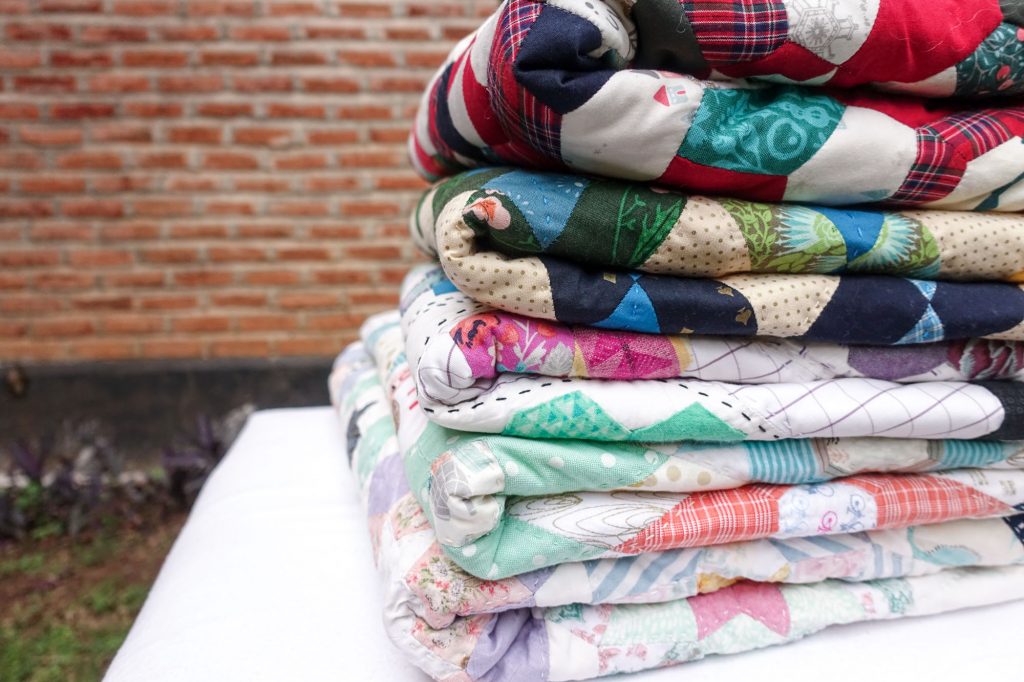
I have long ascribed to Jodi Godfrey of Tales of Cloth and her mindset of sewing for joy. I love the freedom of not being locked into one singular project until it’s finished. However, I also suffer from what I call new-quilt-project-syndrome, or NQPS. This is the common syndrome experienced by quilters of all levels who struggle with wanting to make every new and lovely quilt project that comes along. I am in NO way shaming this practice because I have a quilty bucket list of my own a mile long.
However, I have learned that, for me, when I start juggling more than three quilts at a time, I start to get overwhelmed. The quilts start to become little dictators all screaming for attention at once. I have learned that by only allowing three quilts to have prominence at a time, I can tune in to what each one is saying. Then, I can decide which one I want to give my attention to next.
This is not to say that I don’t have more than three WIPs at any given time. On the contrary, I have probably half a dozen going right now, plus the ones in my head I’d like to start. However, when I can focus my attention on three to actively work on, it allows me just enough variety to prevent boredom, but it also keeps the number low enough that I don’t feel overwhelmed.
Machine pieced quilts have been a nice change of pace.
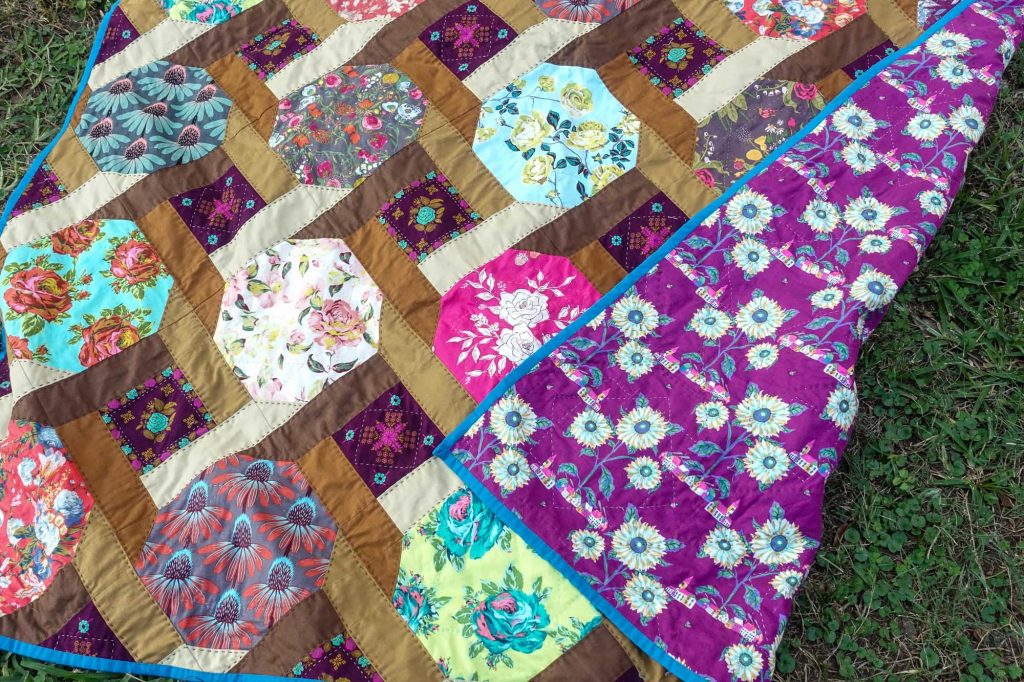
If anyone were to ask me what my favorite method for piecing a quilt is, I would answer EPP hands down. (I mean, I wrote a whole tutorial series about it called the EPP Primer!) However, since the beginning of the year, I have pieced two throw size quilt tops by machine. I’m as shocked as anyone. They were both such a lovely change of pace from the EPP quilts I love, but that progress slowly. It was wonderful and satisfying to piece together a quilt top in just one week when I made my First Gift quilt (design by Brittany Lloyd of Lo and Behold Stitchery).
Then, when things first started escalating with COVID-19, I needed something mindless to clear my head, and my Crazy Corona quilt was born. The whir of the sewing machine as I attached each piece felt therapeutic and productive. Just what I needed. So I have begun to reconsider my general dismissal of machine pieced quilts as “not me.” I fact, I ended up labeling my Crazy Corona quilt a “self-portrait in patchwork.” But that’s for the next point.
I can trust my improv gut more than I thought.
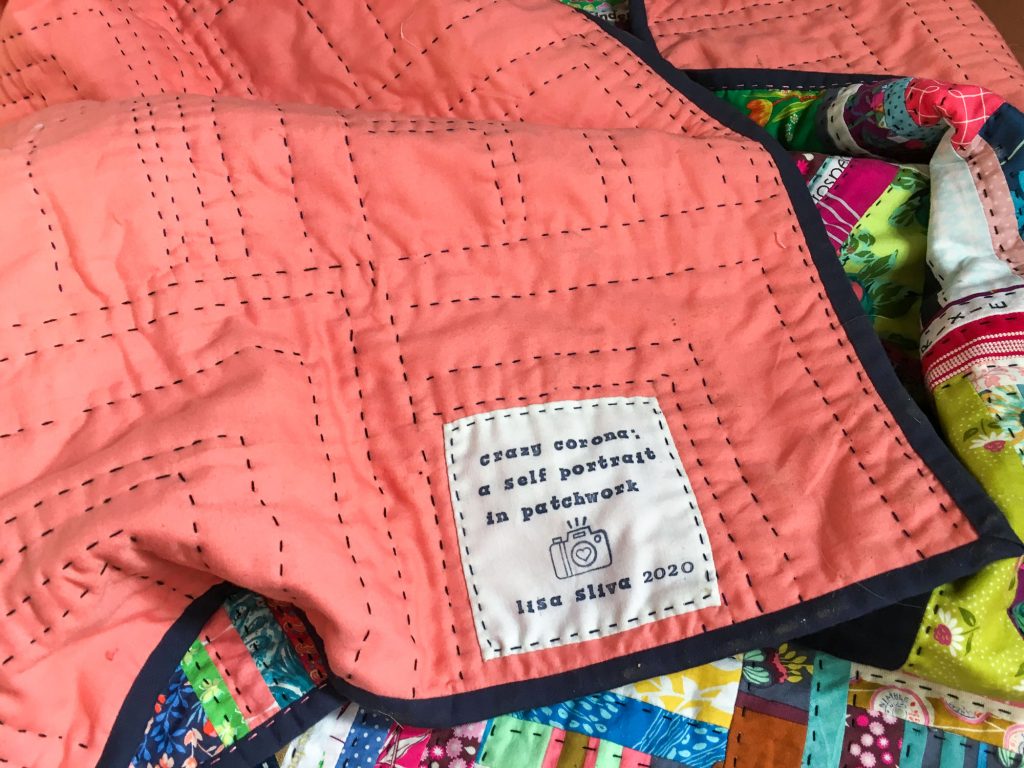
As an enneagram 9w1, I have had to confront a decent bit of perfectionism in my life. Quilting has been no exception. However, I didn’t realize how much it influenced the composition of my quilts until I made my Crazy Corona quilt. Up until then, I had never dared to just “wing” it with whatever scraps and colors I had at my fingertips. I never trusted that I could actually compose something pleasing and coordinated simply by listening to my gut. (For all of the enneagram nerds out there like me, the irony of being a member of the gut triad is not lost on me, but clearly evidence of my nine-ness.)
This quilt surprised me once the top was finished for this very reason. When I stepped back and looked at it, I realized that it was the perfect representation of what it’s like inside of me. It’s a healthy dose of crazy colors in seemingly haphazard arrangement, but if you look closer, you’ll notice that there is a definite structure and order to the overall design. It’s like the marriage of pandemonium and order, the daily struggle of a 9w1…
So, I opted to call this lovely quilt a “self-portrait in patchwork.” It truly represents me more than any other quilt I’ve made. And, if I had set out to make a self-portrait it would have turned out nothing like this. So I’m learning to trust my improv gut just that much more as a result.
I love hand quilting, especially in high contrast dark colors.
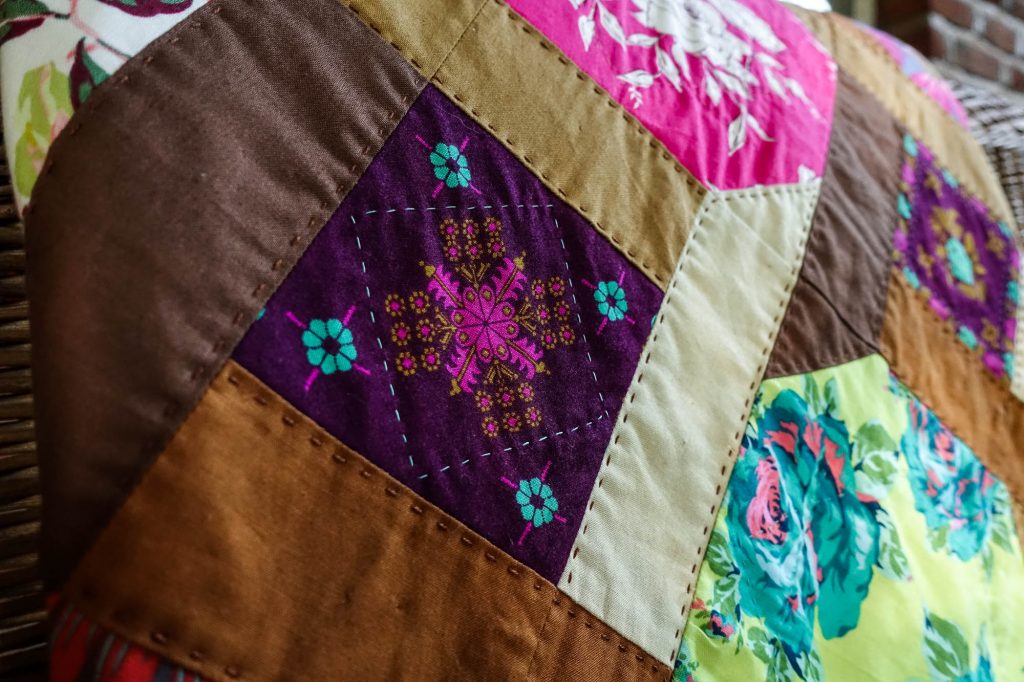
I love hand quilting. It allows for the customization I want, without having to master free motion quilting or even use the machine, which is not my quilting forte. But, I also get to snuggle under the quilt and “get to know it” as I go along. It takes even machine pieced quilts and makes them feel so much more personal to me.
However, in the past I would tend to use colors that blend in with my work. Then, recently, I used a dark brown on my First Gift quilt. While it blended with some of the darker fabrics, it really popped on the lighter ones in a way I loved. In fact, I loved it so much that I used a high contrast perle cotton to hand quilt my Crazy Corona quilt, which I’ll talk about in the next point. It was a move out of my comfort zone, but I suppose that’s a theme I see emerging from all of this reflection.
Using what I have can be really satisfying.
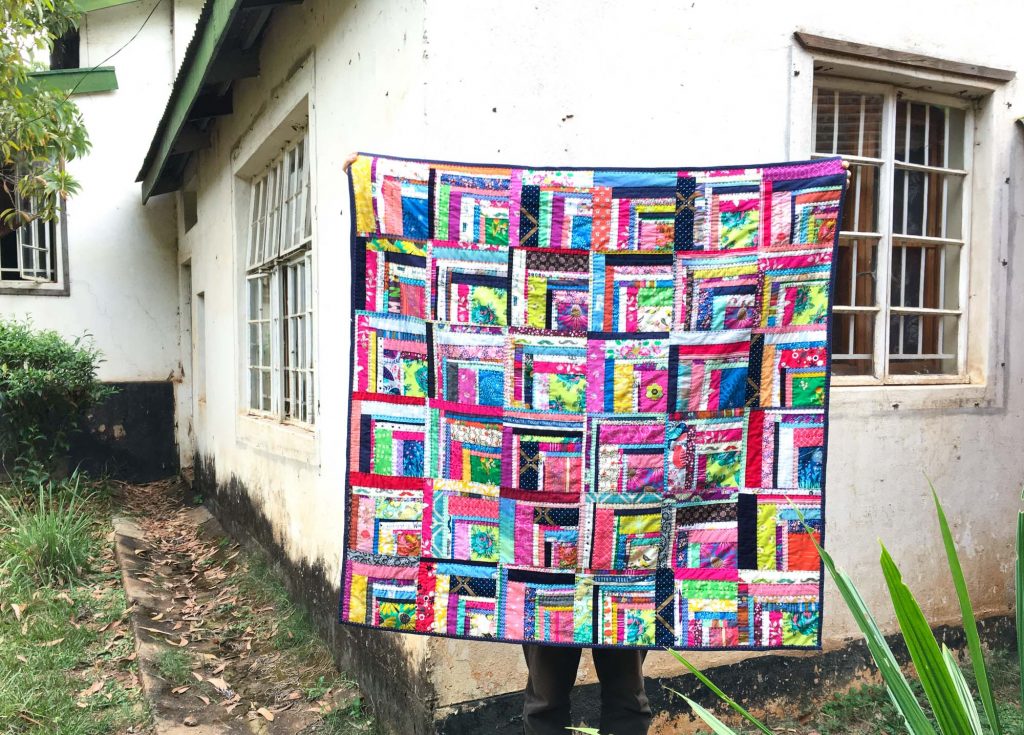
As I considered how I wanted to quilt my Crazy Corona quilt, I knew I wanted to feature kantha style hand quilting. I also really wanted that classic puckered/textured look. However, I live in the land of no cotton batting, so I needed some help.
I put out a plea to my fellow IG quilters to help me rethink my options. After reading some lovely suggestions, I ended up “shopping my stash” and came up with the most delightful combination that offered just the weight I was looking for.
I layered a thick cotton flannel sheet on top of a cotton jersey knit sheet to create the batting. It has the most wonderful drape while staying plush enough to be cozy. Not to mention the texture once I hand quilted it! After the experience with my First Gift quilt, in addition to some inspiration from the beautiful Norah quilts organized by Sunny Day Supply, I hand quilted it in navy blue perle cotton.
Interestingly, I ran out of the navy blue I started with, so I had to switch to black. Another version of me would twitch forever over this discrepancy, but I have come to appreciate it as simply a part of the lesson this quilt has taught me.
I love bold colored quilts.
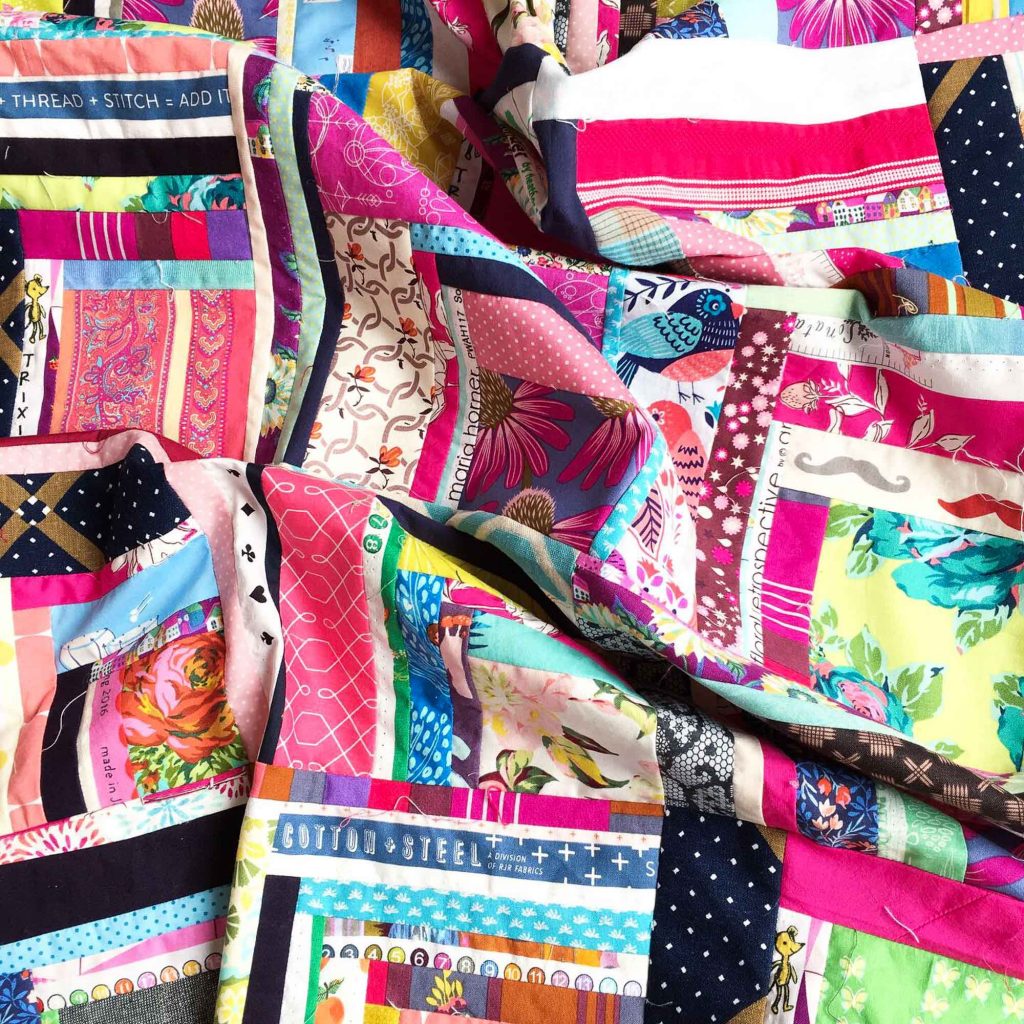
My first few quilts were made with what I personally called more “traditional” quilt colors. They included soft, pastel-ish, restful colors with lots of white. I chose them because I either wanted them to “go” with my decor at the time or because I needed something soft on my eyes when everything in my life was grating on me. In all honesty, those quilts probably mean even more to me than some of my bolder quilts because they chronicle the beginnings of my stitching journey.
However, I have started to discover that the colors that really excite me are bold, bright, and saturated. Maybe it has to do with living in an apartment that is completely neutral in a tired sort of way, not the clean, fresh HGTV way. Maybe it has to do with the vibrant palette of florals and greenery that contrast with the dusty brown earth everywhere we go in Malawi. Whatever the reason, my last two quilts are a testament to it at work, and I am 100% here for it.
Using my favorite fabrics brings me so much joy.
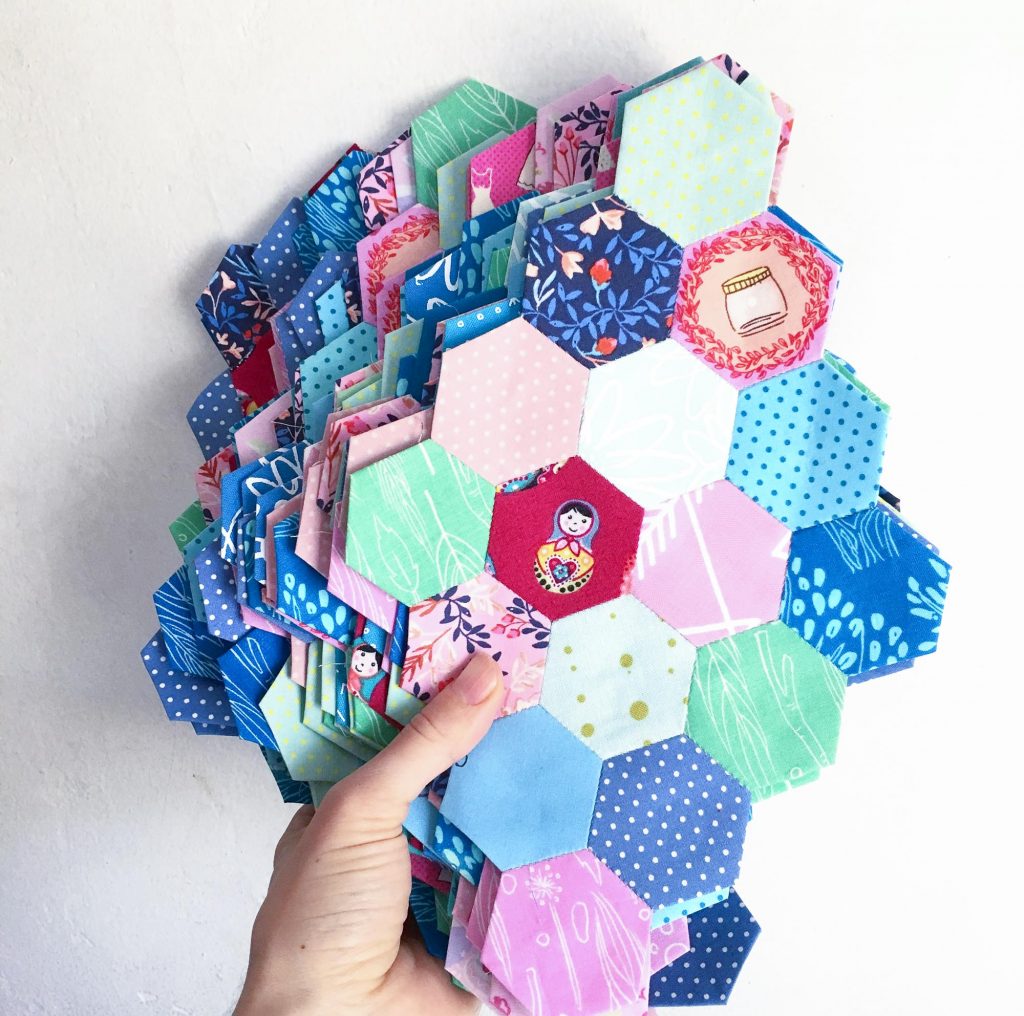
This one may sound completely obvious to some, but when I first started quilting, I used exclusively thrifted fabrics from old shirts, dresses, pillowcases, and sheets. While I still use a good bit of thrifted fabric for more non-specific blenders and solids, I quickly learned the difference between thrifted and designer.
Since then, I have taken the plunge to purchase fabric by actual designers. I tend to want to wait for the “perfect” pattern for these fabrics because I bought them at a premium. But, what I learned is that I get so much joy out of using my favorites. I feel like it puts my carefully considered money to its proper use rather than hoarding it in my stash for “someday.” Hopefully, it gives me focus when purchasing new fabric, so that I make sure it’s fabric I really love.
I recently pulled out long hoarded Sarah Jane Wee Wander along with Amy Sinibaldi Sonata for my new Haypenny quilt (design by Jodi Godfrey of Tales of Cloth), and I just love it!
(An interesting sidebar is that this quilt is another nod to the quieter fabrics I just said I’m moving away from. However, I bought these fabrics earlier on in my fabric journey and I still love them. Also, my husband recently admitted to me that he prefers the more traditional quilts I make… I suppose that’s why I tend to call this a journey. There are detours and roundabouts and u-turns all along the way.)
I love telling a quilt’s story.
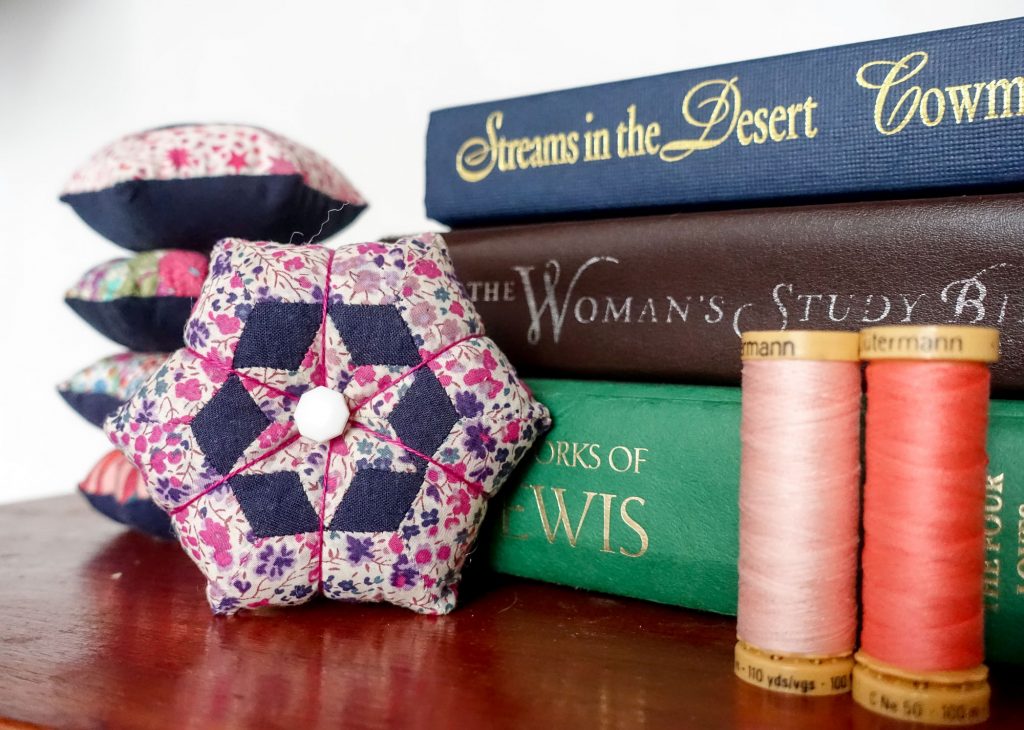
Only recently have I been able to put this concept into words. As I wrote the Selah pin cushion pattern, I realized how meaningful backstories are to me. I also realized how much I enjoy telling stories. While this particular lesson is still extremely formative at this stage, I am leaning in closer and starting to connect the dots.
I noticed early on in my stitching journey that quilts speak. They nudge and redirect and set their own pace. Each one has a story to tell, and I feel like it’s my joy and privilege to give expression to those stories. Sometimes they contain lessons, but other times they simply offer quiet affirmation. I’m not sure how each one will find expression, but I look forward to finding out.
Have you learned anything from this unusual season?
There have been plenty of things I think we would all like to leave behind as we step out into life after COVID-19. But, it has helped me reframe a little bit as I have reflected upon this unusual season. I’d love to hear if there is any small lesson you might be taking away from this season that you didn’t expect to. In the meantime, happy stitching, everyone!
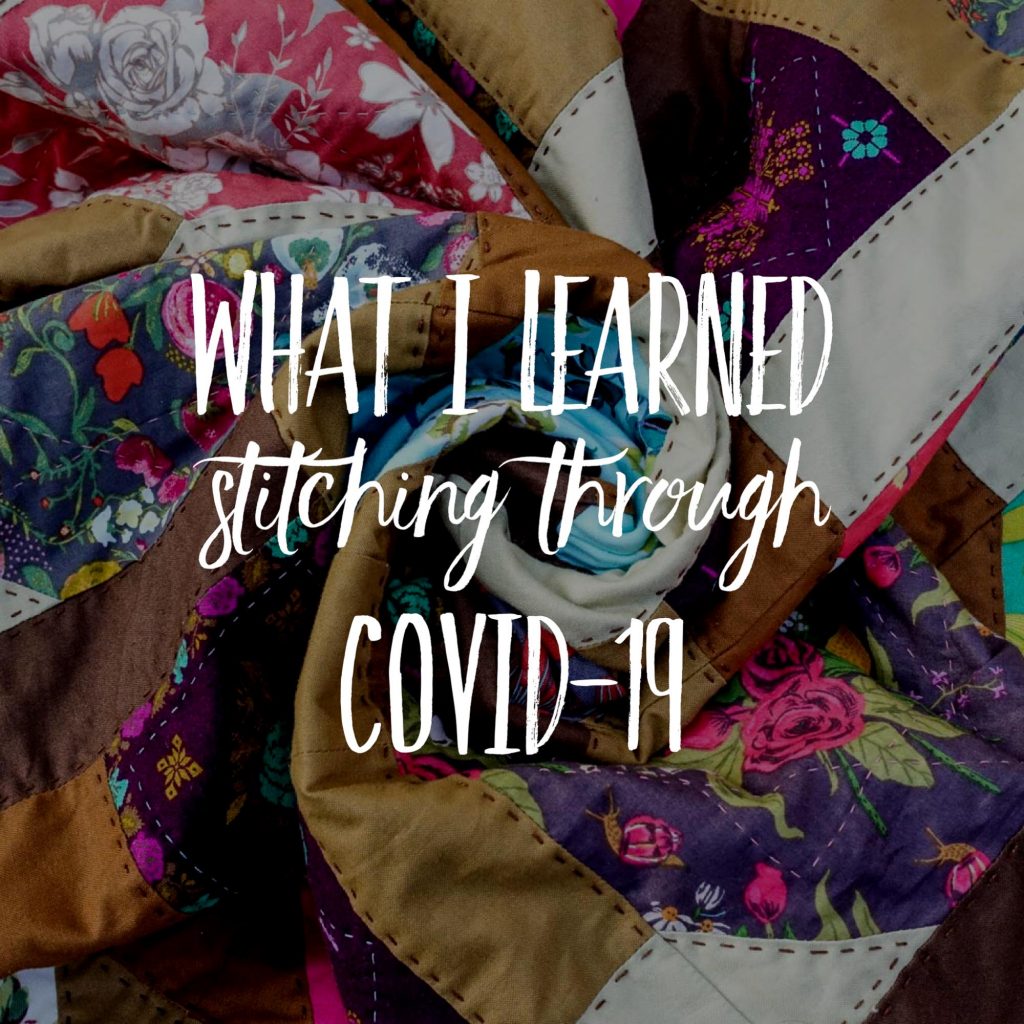
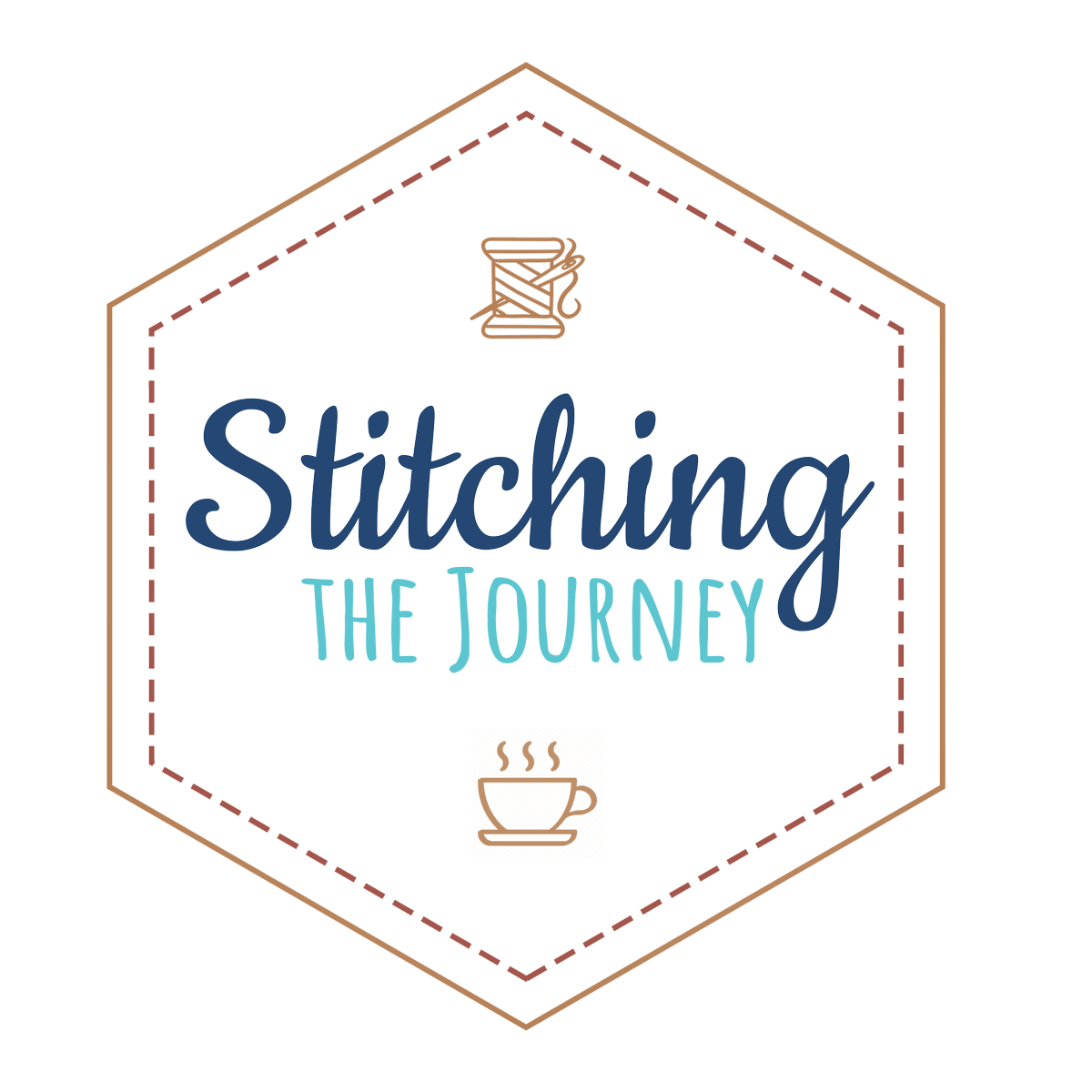
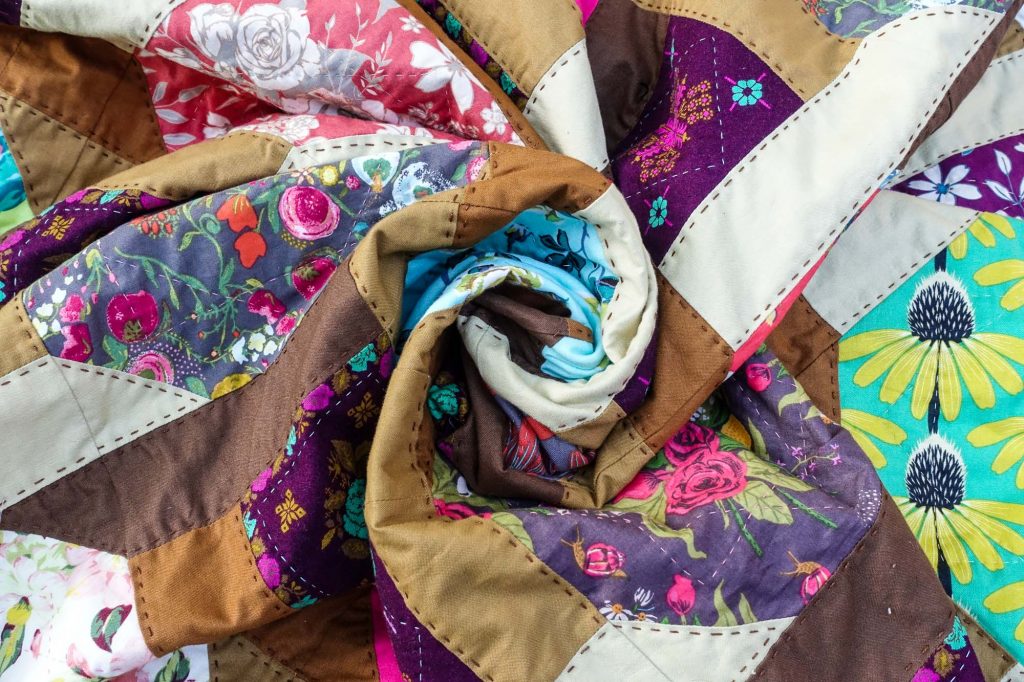
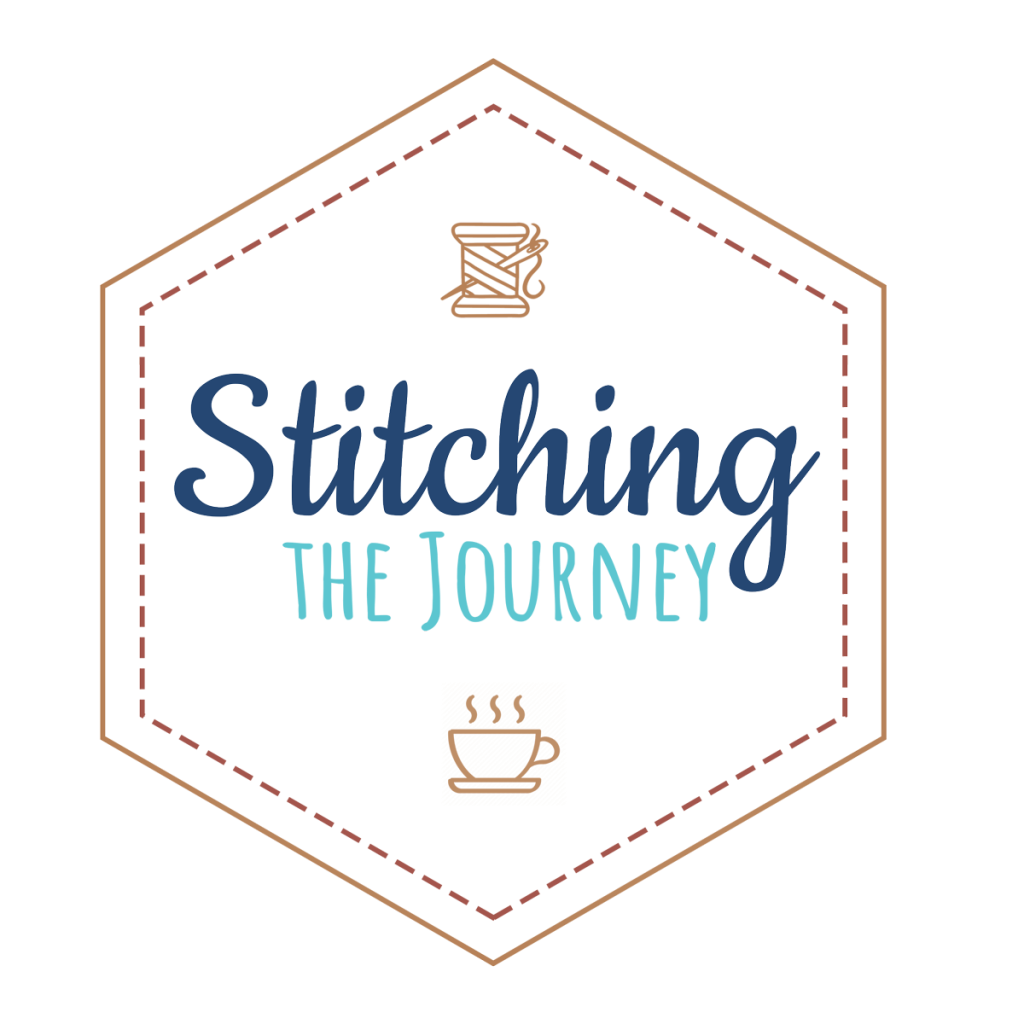
2 Responses